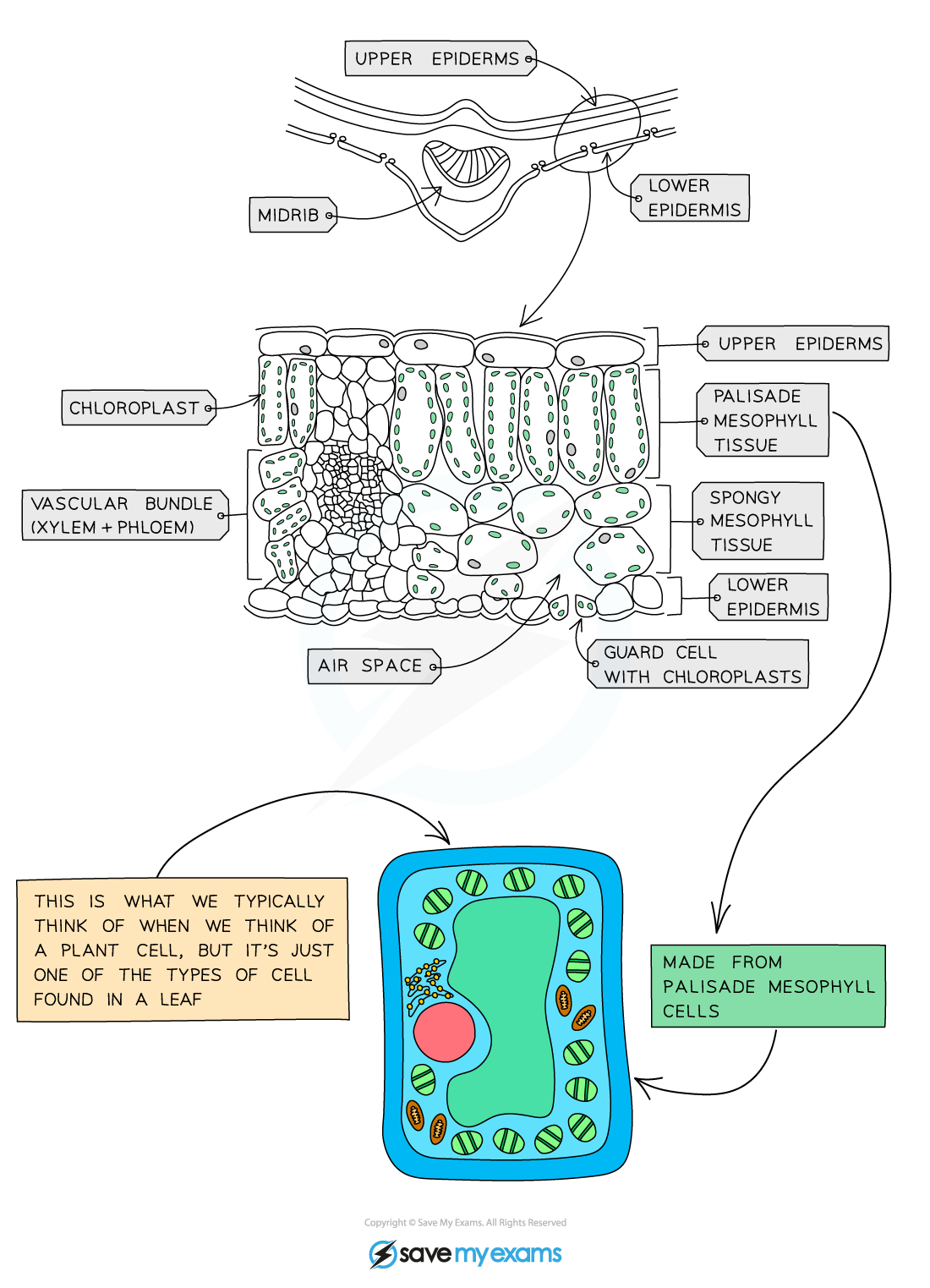Drawing Leaf Structure: Skills (DP IB Biology) : Revision Note
Drawing Leaf Structure
You will be expected to identify the following structures in the leaf of a dicotyledonous plant:
Chloroplasts
Cuticle
Guard cells
Stomata
Upper and lower epidermis
Palisade mesophyll
Spongy mesophyll
Air spaces
Vascular bundles (xylem and phloem)
Structure of Leaf Diagram

Diagram showing the transverse section of a leaf
Drawing a plan diagram
Plan diagrams are drawings made from micrographs or from viewing specimens under a low magnification
Keep the following in mind when drawing a plan diagram:
No individual cells are drawn, only tissue layers enclosed by lines should be present
Pay attention to the distribution of tissue throughout the plant organ
Use a sharp pencil and draw clear, continuous lines
Do not shade any part of your drawing
Make sure your proportions and observations are accurate
Draw what you actually see, not what you would expect to see from a textbook
Draw your drawing big enough to fill up at least half the available space
When labelling your plan diagram remember to:
Use a ruler to draw label lines, not freehand
Avoid using arrowheads and make sure the label lines stop at the structure
Make sure label lines do not cross each other
Write all labels horizontally, not at different angles
Worked Example
The following micrograph shows a transverse section of a dicotyledonous leaf.
Draw a labelled plan diagram of this micrograph.

By Berkshire Community College Bioscience Image Library, Public domain, Wikimedia
Answer:


You've read 0 of your 5 free revision notes this week
Sign up now. It’s free!
Did this page help you?
